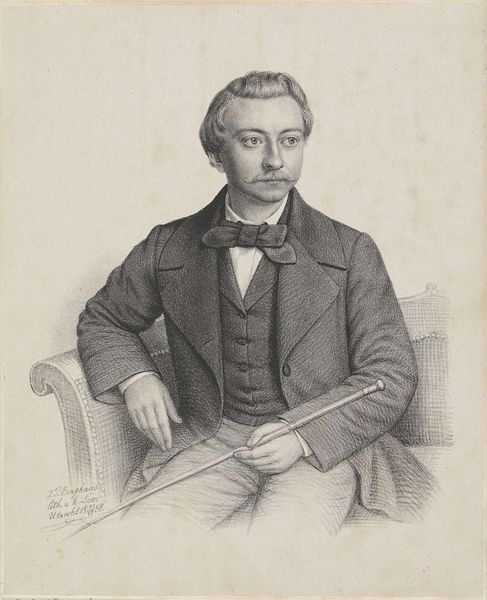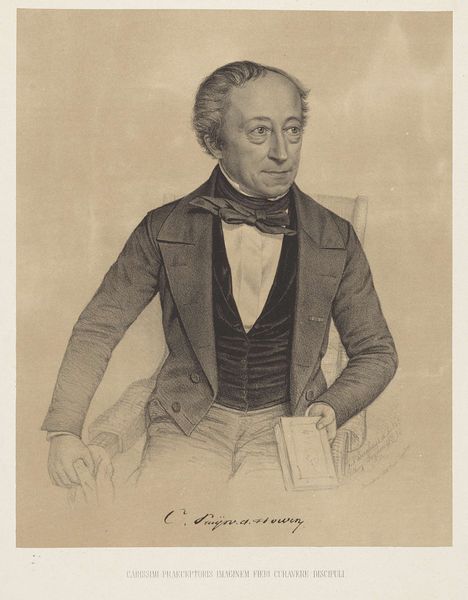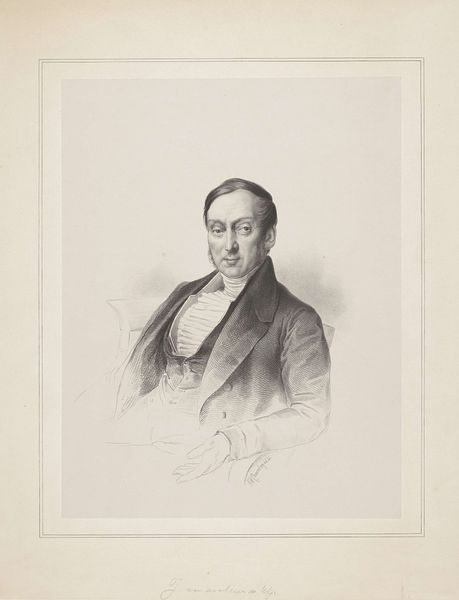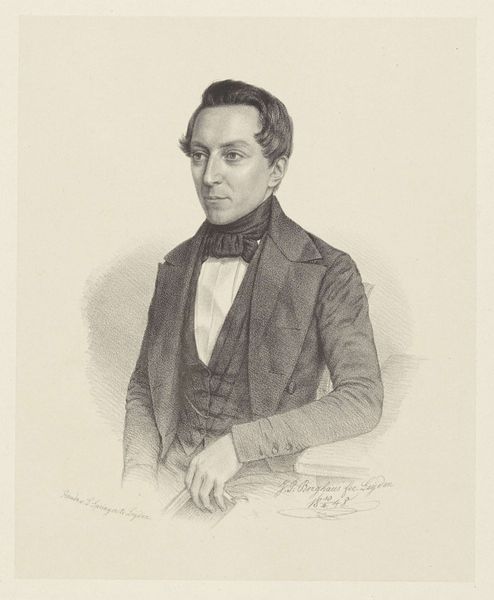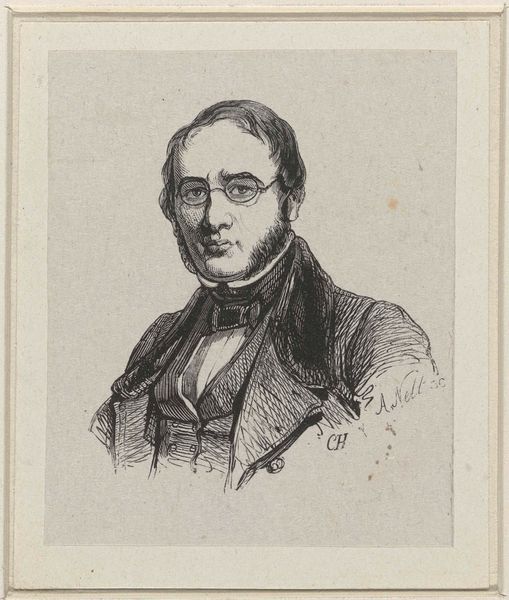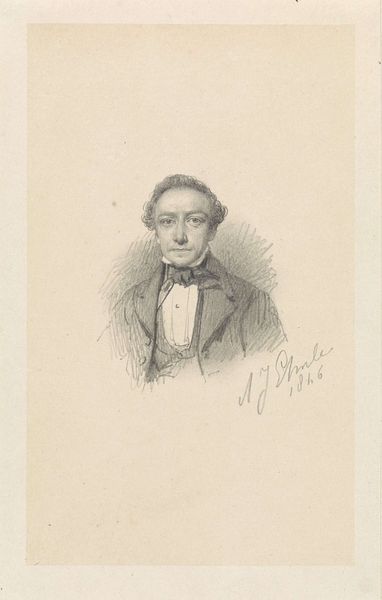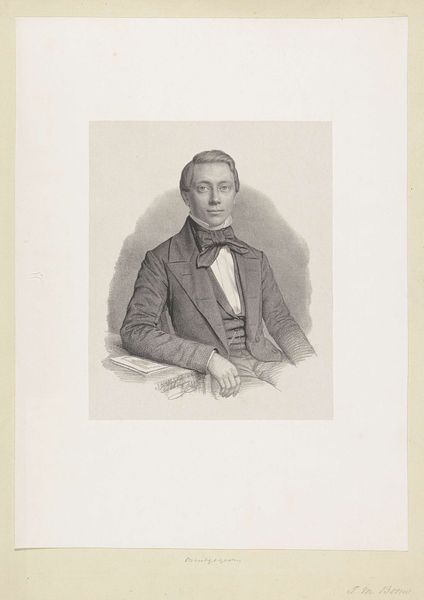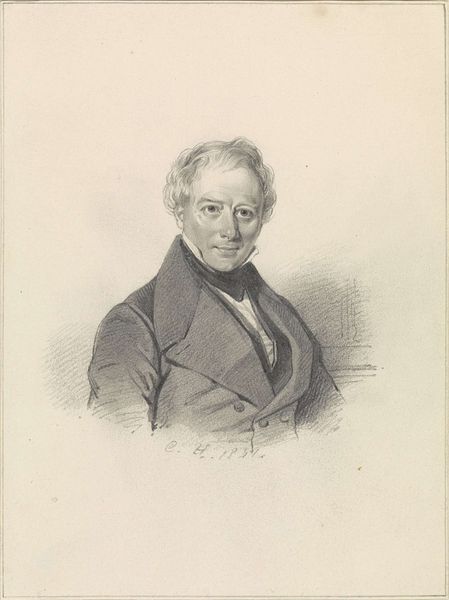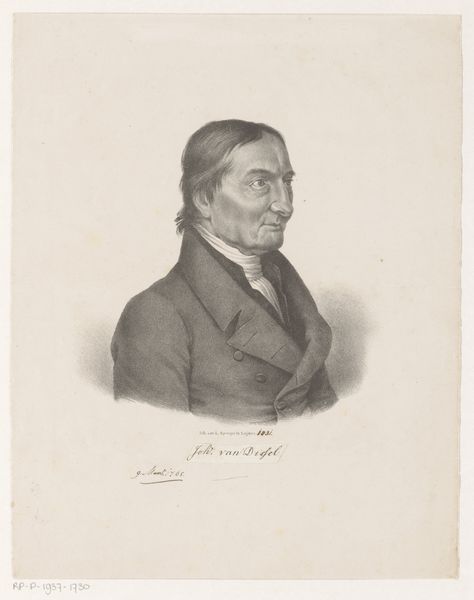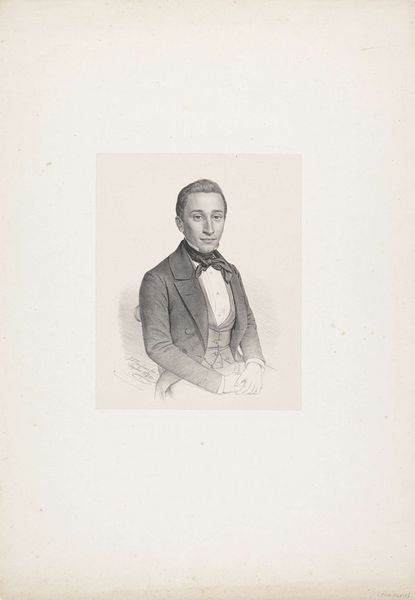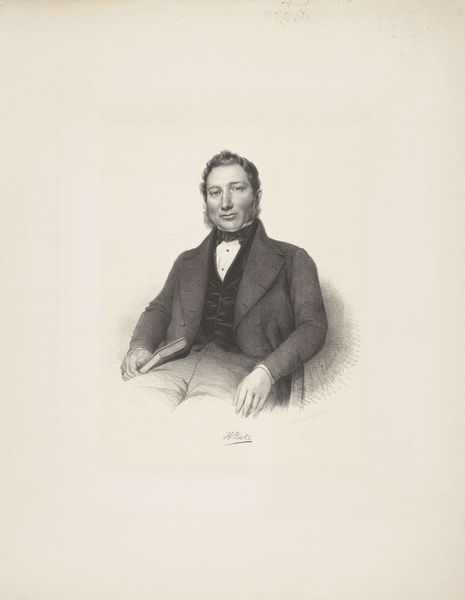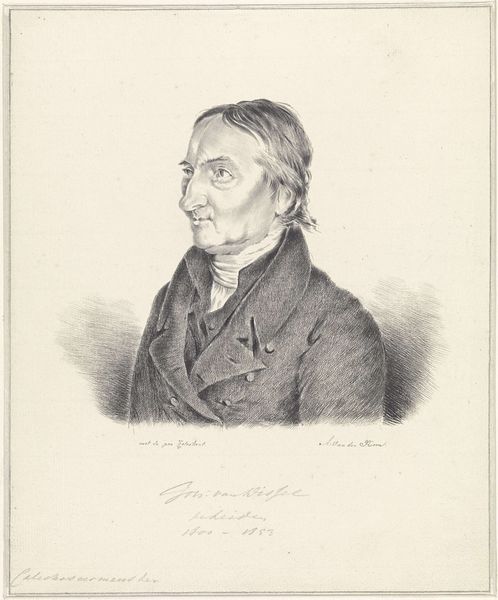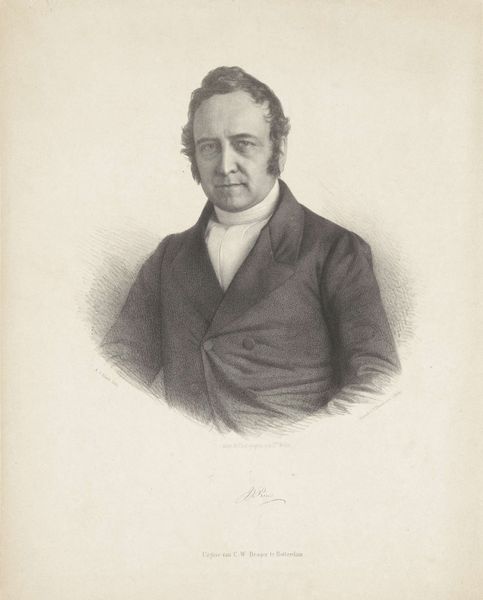
Portret van predikant Herman Gerrit Jacobus van Doesburgh 1842 - 1887
0:00
0:00
drawing, pencil
#
portrait
#
drawing
#
caricature
#
pencil drawing
#
pencil
#
portrait drawing
#
academic-art
#
realism
Dimensions: height 275 mm, width 275 mm
Copyright: Rijks Museum: Open Domain
Curator: Immediately striking, wouldn’t you say? There is an austerity that permeates this image. Editor: Yes, quite somber. A tight composition with cool, neutral tones. What exactly are we looking at? Curator: This is a pencil drawing titled "Portret van predikant Herman Gerrit Jacobus van Doesburgh" – a portrait of Reverend Herman Gerrit Jacobus van Doesburgh, by Sybrand Altmann. It's thought to have been created between 1842 and 1887 and it now resides at the Rijksmuseum. Editor: I'm intrigued by Altmann’s choice of pencil. It’s a medium often associated with preliminary sketches, studies and reproduction, but here it's the final form. I wonder if the availability of materials played a role. Pencil might have been a practical choice. Was Altmann perhaps trying to market reproductions, perhaps selling drawings to congregants who esteemed their spiritual leader? Curator: That's a fascinating line of inquiry. Examining the social context, certainly mass production influenced artistic choices. The rise of the middle class created demand for affordable portraiture. What’s interesting is how Altmann utilizes realism. He shows the sitter as he is, wrinkles and all. Not quite flattering but it is, well, frank. The very precise control of line weight suggests academic training. How does the application of line inform your impression? Editor: It's precise but the blending technique around the head seems almost to lift the subject off the page – the way he rendered the coat also, it gives him solidity within the ethereal nature of a pencil drawing. It gives volume. The semiotic reading here suggests this grounded presence amidst some kind of change, or... impermanence, is palpable. Curator: Indeed. The contrast you pinpoint is what arrests me, I mean it's the softness within the definition and firm lines which I think speaks about not just Reverend Doesburgh’s image, but also the moment it was produced in. The portrait's meticulous creation indicates careful skill. And pencil’s utility meant art production met the demands of social and economic mobility. Editor: It allows us, or me at least, to consider portraiture not just as representation but as a function of production. Something both personal and subject to social factors. Curator: Precisely! It reshapes how we look at not just the artwork in terms of "image," but the context surrounding its emergence. Editor: Right. Looking at it this way illuminates an otherwise simple portrait. Thank you!
Comments
No comments
Be the first to comment and join the conversation on the ultimate creative platform.

